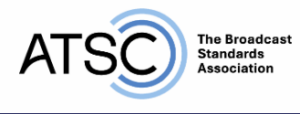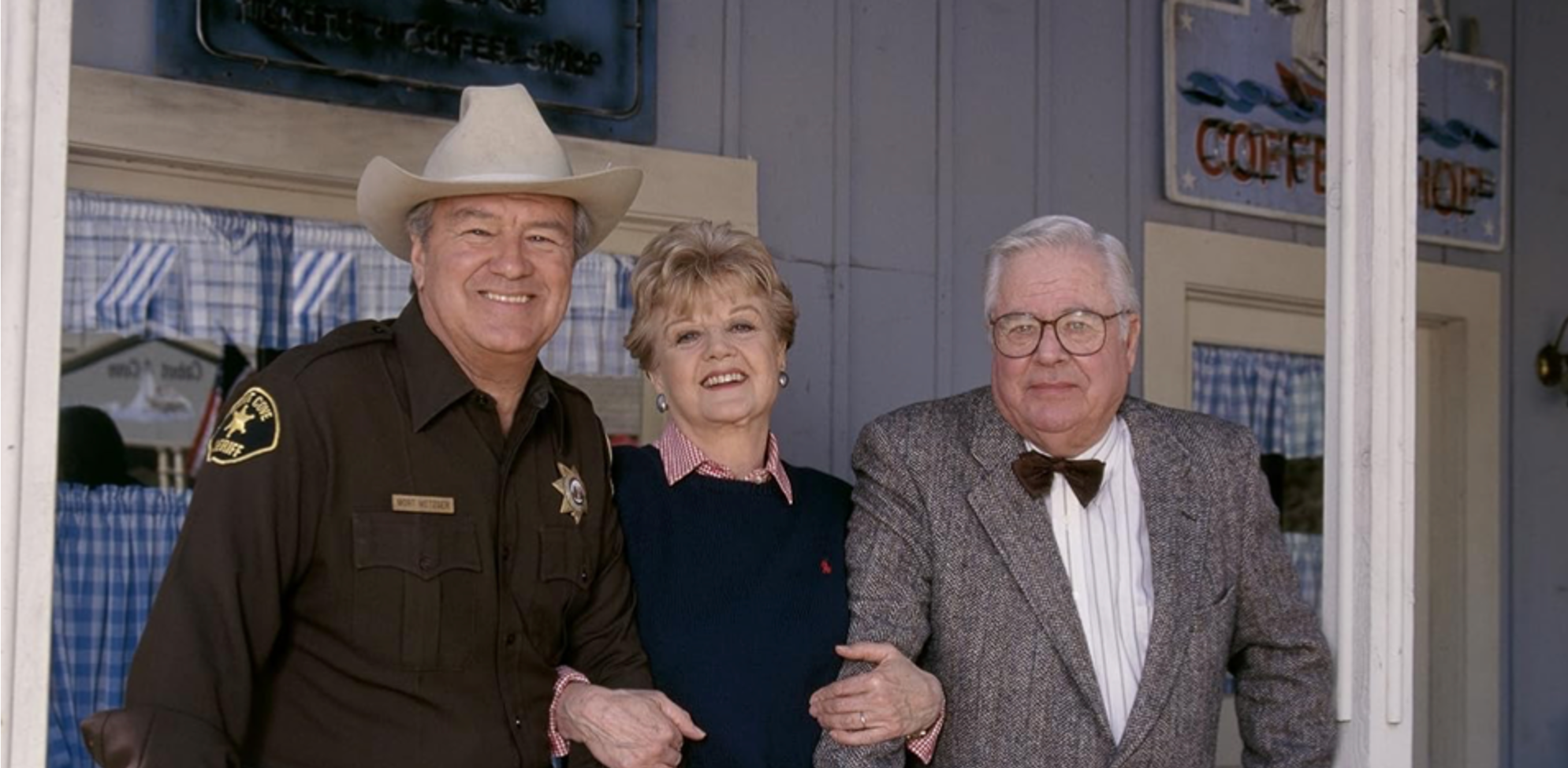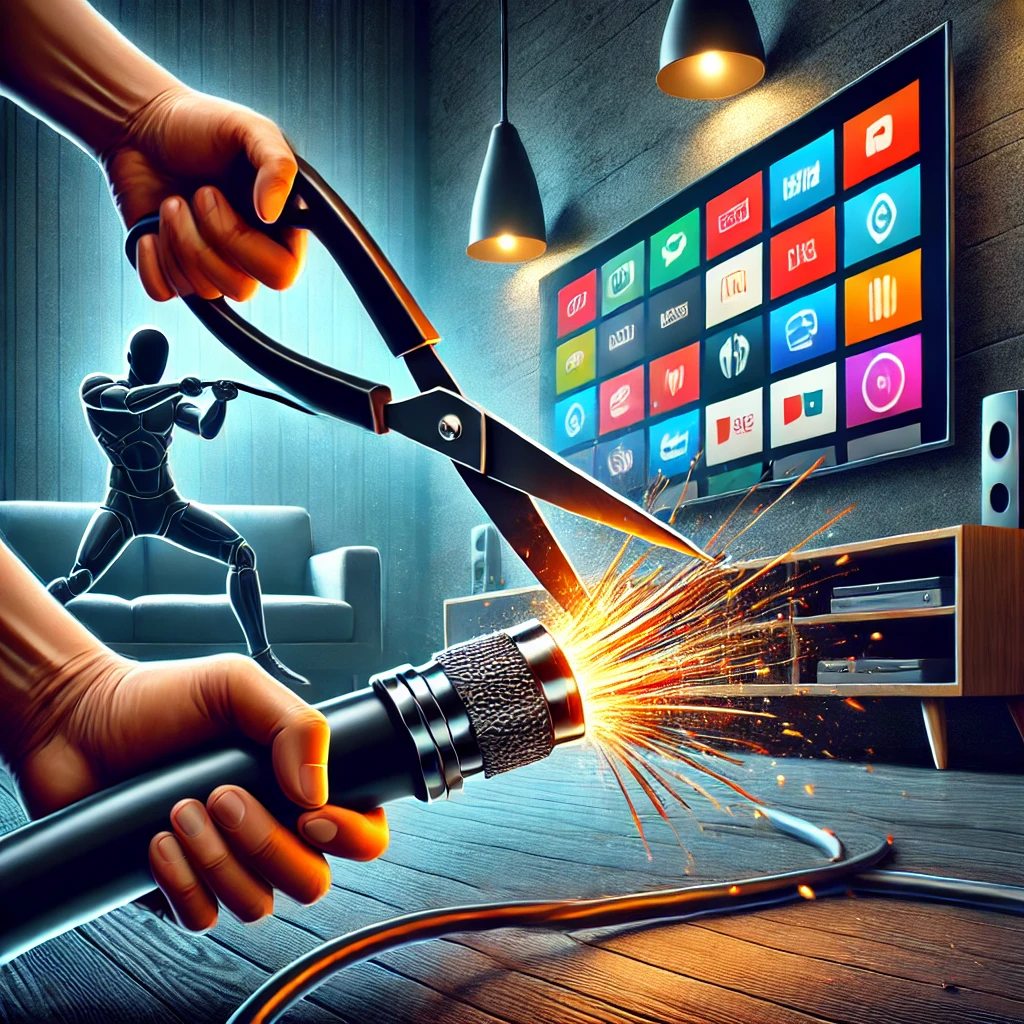Balancing Both Worlds
Terrestrial TV Meets Streaming Video
A growing trend of consumers are abandoning traditional cable or satellite TV subscriptions in favor of terrestrial television broadcasting and internet-based streaming services. Known as “Cutting the Cord” began as a niche movement has evolved into a significant shift in how people consume media. The roots of this shift are complex, driven by changes in technology, consumer behavior, economic factors and most of all content.
Early Days: The Rise of Cable and Satellite TV
In the late 20th century, cable and satellite TV revolutionized home entertainment, offering a vast array of channels and superior content, transforming television from a limited medium into a broad and diverse landscape. However, as the years passed, the practice of bundling channels into expensive subscription packages became increasingly frustrating for viewers, many of whom were forced to pay for channels they didn’t want while still lacking additional local broadcast services they valued. The trade-off was clear: either stick with free local and network terrestrial broadcasts or pay a premium for cable or satellite, which undeniably delivered better picture quality than the outdated analog NTSC broadcasts. Then came HDTV with both digital cable services and terrestrial broadcasting transmission systems supported by the now established ATSC (Advance Television Systems Committee). This was a pivotable point in history that slowly brought terrestrial broadcasting back in view for those that wanted out of the bundling schemes marketed pay TV.
Transitioning to the Future: ATSC 3.0
While ATSC 1.0 represented a leap forward for television broadcasting, the rapid pace of technological advancement, coupled with increasing demand for mobile viewing and 4K Ultra HD content, soon necessitated another evolution in broadcast standards. Enter ATSC 3.0, the most significant advancement in TV broadcasting since the original ATSC 1.0 standard still providing all the major networks and more.

• Ultra High Definition (UHD) and High Dynamic Range (HDR): Support for 4K UHD video with HDR, delivering significantly higher image quality, brightness, contrast, and color accuracy.
• Immersive audio: Support for object-based audio formats like Dolby Atmos and MPEG-H, providing a more immersive sound experience.
• IP-based transmission: Unlike ATSC 1.0, which was based on MPEG-2 video compression, ATSC 3.0 employs IP (Internet Protocol) technology, allowing seamless integration of internet-based services with over-the-air broadcasts.
• Interactive services: ATSC 3.0 allows broadcasters to offer interactive content, personalized advertising, and on-demand viewing directly through the TV interface.
One of the most notable features of ATSC 3.0 is its flexibility and adaptability. It provides a framework that can be updated with future technological advancements, such as next-generation codecs or more efficient spectrum usage, ensuring it remains relevant as broadcasting and telecommunications continue to evolve.
Global Adoption and Implementation
ATSC 3.0’s benefits extend beyond improved audio and video quality; the standard also allows broadcasters to deliver content more efficiently and reach a broader audience. While ATSC 1.0 was widely adopted in the U.S., Canada, Mexico, and South Korea, ATSC 3.0 has gained even more traction in these regions:
• South Korea: The first country to adopt ATSC 3.0, deploying the standard nationwide in 2017, particularly to support 4K broadcasts during the 2018 Winter Olympics.
• United States: The ATSC 3.0 rollout began in 2020, with major broadcasters adopting the new standard in key markets. The FCC has encouraged the voluntary transition, and many stations are now broadcasting in both ATSC 1.0 and 3.0.
• Other markets: Several countries are evaluating or have begun trials of ATSC 3.0, recognizing its potential for future-proofing broadcasting infrastructure including Jamaica and Brazil, .
One challenge in the transition to ATSC 3.0 is the requirement for new hardware. Unlike ATSC 1.0, which could be received by most digital televisions with the right tuner, ATSC 3.0 requires consumers to purchase ATSC 3.0-compatible TVs or external receivers. As manufacturers increasingly incorporate ATSC 3.0 tuners into new devices, the adoption rate is expected to grow.
The Role of Spectrum Efficiency and Hybrid Broadcast-Broadband Services
A core aspect of the ATSC evolution is the emphasis on spectrum efficiency. As the demand for wireless communication grows, broadcasters face increasing pressure to use spectrum more efficiently. ATSC 3.0 helps address this issue by leveraging advanced video compression (HEVC) and scalable bandwidth usage, allowing stations to broadcast higher-quality content with less spectrum.
Additionally, ATSC 3.0’s future IP-based transmission system allows hybrid broadcast-broadband services. Broadcasters will be able to combine over-the-air content with internet-based services, offering more versatile and interactive experiences. Viewers can seamlessly integrate on-demand content, personalized news, and targeted advertising into live broadcasts, making television more interactive and tailored to individual preferences.
Future Directions: Beyond ATSC 3.0
The ATSC is continually working on updates and enhancements to ATSC 3.0 to ensure it keeps pace with the rapidly changing media landscape. Some of the potential areas for future development include:
• 8K broadcasting: As consumer interest in 8K Ultra HD grows, ATSC may look to support this resolution in future revisions of the standard.
• Advanced compression techniques: Continued improvements in video codecs, such as Versatile Video Coding (VVC), could be integrated to make broadcasts even more bandwidth-efficient.
• Augmented reality (AR) and virtual reality (VR): With the growth of immersive technologies, future ATSC standards could explore integrating AR/VR content within broadcast services.
• Artificial intelligence (AI) and machine learning (ML): AI could be used to enhance content delivery, optimize compression techniques, or offer more sophisticated personalized viewing experiences.
This All Sounds Good But Does it Perform?
Are there any unforeseen issues that could disrupt an aggressive push to cut the cord? As we write this, we’ve decided to jump in ourselves and experience the true nature of cord-cutting firsthand.
First up, Terrestrial Broadcasts.
We decided to put terrestrial broadcasting to the test setting up our own ATSC antenna system, rotor, coax down lead, and 4 K television. Here at DPL Labs, our cable certification company has a long history of experimenting with a wide range of products and systems from our consumer base and our dedicated members. This helps us stay ahead of technological advancements while mitigating the common anomalies that often arise with new innovations. So, let’s see how all this works.
Location, Location, Location
Much of what we encountered revolved around the content, quantity, and quality of local broadcasters. Every region differs, from metropolitan areas to rural locations farther from major broadcast stations. Additionally, many broadcast transmitters are clustered in specific areas, known as “Stick Farms,” where multiple towers are shared by various stations, likely regulated to some extent by the FCC. DPL Labs’ headquarters is situated in a rural area, roughly halfway between Orlando and Jacksonville, Florida. This geographical challenge became the first obstacle in our journey toward cutting the cord.
Antenna Selection
This task posed an interesting challenge—not due to technical complexity, but because it mirrored the confusion consumers often face when selecting accessories, similar to the experience’s consumers have with HDMI cables. We discovered that the antenna market was even worse, with some products making outrageous claims, such as being able to capture TV stations for up to 1,700 miles away! This is sheer nonsense, considering the undeniable limitation imposed by the curvature of the Earth alone. Figure 1 demonstrates what these limitations really look like. For optimal performance, the antenna must have a clear line of sight to the broadcast towers to ensure consistent, solid reception. The height of the antenna also plays a critical role in determining the effective reception range, as shown in the provided formula. Once the installation was complete, we were ready to position the antenna for optimal reception of the desired stations. Our system included a rotor, allowing us to adjust the antenna’s direction and explore how many stations we could receive with strong, stable signals. We ended up with 87 stations, even though there aren’t that many actual stations in our broadcast area. The reason our test TV detected so many is that most stations broadcast subchannels, offering additional programming that cable providers don’t always carry. For example, Channel 4 in Jacksonville has three subchannels, including Start TV on 4.2 and Dabl on 4.3, both of which air classic shows and series. The video quality for this type of programming varied from reasonable to quite unbelievable. Some stations had as many as 12 subchannels, providing a wealth of content. We were particularly surprised when we checked Start TV on 4.2. That’s when something remarkable appeared on the screen:
The height of the antenna also plays a critical role in determining the effective reception range, as shown in the provided formula. Once the installation was complete, we were ready to position the antenna for optimal reception of the desired stations. Our system included a rotor, allowing us to adjust the antenna’s direction and explore how many stations we could receive with strong, stable signals. We ended up with 87 stations, even though there aren’t that many actual stations in our broadcast area. The reason our test TV detected so many is that most stations broadcast subchannels, offering additional programming that cable providers don’t always carry. For example, Channel 4 in Jacksonville has three subchannels, including Start TV on 4.2 and Dabl on 4.3, both of which air classic shows and series. The video quality for this type of programming varied from reasonable to quite unbelievable. Some stations had as many as 12 subchannels, providing a wealth of content. We were particularly surprised when we checked Start TV on 4.2. That’s when something remarkable appeared on the screen:
“Murder, She Wrote”
This beloved series, starring Angela Lansbury, captivated millions of viewers in its heyday. Considering, the picture quality was outstanding! Although our system reported its resolution at 720p, the level of detail was impressive— better than what we’d typically get from cable.  Skin textures and colors seemed slightly exaggerated, which may have been intentional at the time. Every detail was sharp, and as we marveled at the incredible performance of our new ATC system, we continued to discover additional stations. Though not many super Hi Def channels, it signaled the exciting direction in which this technology can go.
Skin textures and colors seemed slightly exaggerated, which may have been intentional at the time. Every detail was sharp, and as we marveled at the incredible performance of our new ATC system, we continued to discover additional stations. Though not many super Hi Def channels, it signaled the exciting direction in which this technology can go.
The Advanced Television Systems Committee has played a crucial role in shaping the television broadcasting landscape over the past few decades. From the transition to digital TV with ATSC 1.0 to the groundbreaking advancements of ATSC 3.0, the ATSC standards have continuously evolved to meet the demands of both broadcasters and consumers while still supporting free TV. As technology advances further, ATSC will likely continue to lead the way, defining the future of broadcasting and ensuring that TV remains a vital and dynamic part of the media ecosystem.
Next-Up – The Streaming Revolution
Included in the wave of cord-cutting began with the advent of high-speed internet and the rise of streaming services. Companies like Netflix (which initially focused on DVD rentals by mail) shifted to an online streaming platform in 2007. It provided viewers with on-demand access to TV shows and movies, without the need for a traditional cable connection.
Streaming services like Hulu, Amazon Prime Video, and later Disney+, Apple TV+, and HBO Max followed suit, offering original content along with vast libraries of licensed shows and movies. These services gave consumers the freedom to watch what they wanted, when they wanted, and on various devices. The key innovation was that this content was accessible without a cable subscription, all for a lower monthly fee than traditional cable TV.
The Cost Factor: Economics of Cord-Cutting
One of the biggest reasons for cord-cutting has been cost. The average cable TV bill has continued to rise over the years, often surpassing $200 per month, driven by factors like infrastructure maintenance and channel licensing fees. For many consumers, this was unsustainable, especially when they were only interested in a handful of channels.
Streaming services, on the other hand, offered a more affordable alternative. Netflix, for instance, started at around $8 per month for basic access, with other services offering similar prices. Over time, consumers realized that they could piece together a range of services and still pay significantly less than they did for cable.
The Evolution of Content Delivery
The rise of broadband internet has been instrumental in enabling cord-cutting. Faster and more reliable internet connections allow for high-definition (and even 4K) streaming, which wasn’t possible in the early days of the web. The ubiquity of smart devices—smart TVs, streaming boxes (like Roku, Amazon Fire Stick, and Apple TV), and mobile devices—has further accelerated the trend by making streaming content more accessible.
In addition, many TV networks began offering their own direct-to-consumer streaming services, such as CBS All Access (now Paramount+) and Peacock, giving consumers even more options. This explosion of choices gave viewers greater control over their media consumption.
Live TV and Sports: The Last Hurdle
For many, live sports and news were the main reasons for staying with traditional cable. Streaming platforms initially faced challenges in delivering live programming, particularly for sports enthusiasts. However, services like YouTube TV, Sling TV, and Hulu + Terrestrial Broadcasting have stepped in to bridge this gap, providing live TV streaming at a fraction of the cost of cable. Even major sports leagues, such as the NFL and NBA, have introduced their own dedicated streaming services.
Terrestrial Broadcasting services are free, and while some live TV services can still require a subscription fee, they provide greater flexibility. With no contracts or equipment rental fees, they appeal to those who are hesitant about cutting the cord.
The Dark Side: Fragmentation and Subscription Fatigue
Despite the initial promise of lower costs and greater flexibility, cord-cutting has led to an unexpected consequence—subscription fatigue. With so many streaming services now available, each offering exclusive content, consumers often find themselves needing to subscribe to multiple services to access all the shows and movies they want to watch. Over time, these costs can add up, sometimes approaching or even exceeding the price of a traditional cable subscription.
Additionally, some services have begun to raise their prices, which has left some early cord-cutters frustrated. The sheer number of streaming platforms has also led to a fragmentation of content, with popular shows and movies spread across various services, making it harder for consumers to keep track of where their favorite content is available.
What’s Next: The Future of Cord-Cutting
As cord-cutting continues to evolve, the future of television consumption is likely to be shaped by a balance between convenience, cost, and content availability. Some analysts believe that we may see the rise of “bundled streaming,” where several services come together to offer a unified experience, much like cable bundles, but without the same high costs or rigid contracts.
On the other hand, the ongoing competition between streaming platforms could lead to more consolidation, with smaller or niche services being absorbed by larger ones. This could simplify the landscape but also reduce the diversity of content and platforms.
Ultimately, the story of cord-cutting is about consumer choice. In a media landscape that is increasingly decentralized, viewers have more power than ever to decide how they want to consume content. The days of being locked into a single, expensive cable plan are over. Whether or not the total cost of streaming services ends up rivaling that of cable, the shift toward digital, on-demand, and more customizable TV experiences seems irreversible.
Cord-cutting represents a seismic shift in the entertainment industry, driven by the demands of a digital, on-demand culture. While it initially promised lower costs and more flexibility, the growing number of streaming services has introduced new challenges. Nevertheless, it marks a fundamental change in how we engage with media, empowering consumers to make their own choices in a way that was unthinkable during the dominance of cable TV.



